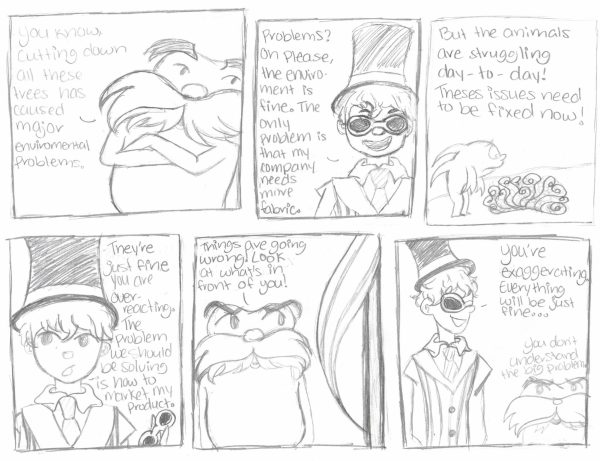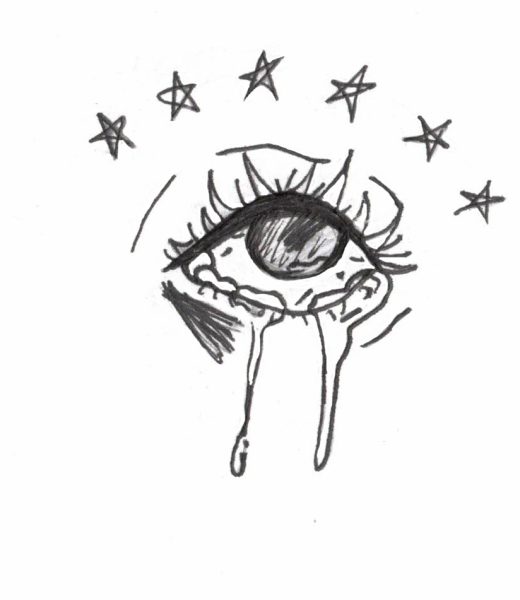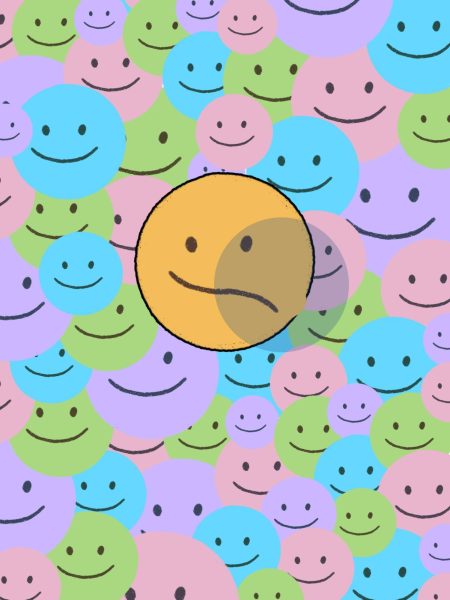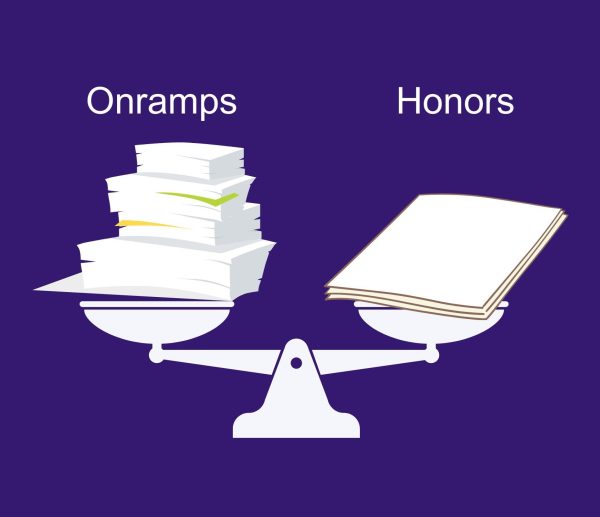No, Abortion Is Murder

Aborted fetuses are, in fact, human. They are people. They are alive and growing.
September 16, 2022
The overturning of the Roe v. Wade court case decision was a controversial moment in history. On January 22, 1973, the United States Supreme Court voted that the due process clause of the Fourteenth Amendment provides the “right to privacy” which includes the right for a pregnant woman to end her pregnancy. On June 24, 2022, this case decision was overturned causing an uproar from the 62% of society who believe abortion should be legal in the country. The overturning leaves the decision to the individual states.
Abortion shouldn’t be legal anywhere. Abortion is not healthcare. Abortion is murder.
Those aborted fetuses are, in fact, human. They are people. They are alive and growing. Ultrasound technology has given people the ability to see into the womb, helping us to see the obvious humanity in a developing embryo. DNA is present in that “clump of cells” from the very beginning. Growth and development occur because a living being exists.
After only five to nine days, the fetus burrows into the womb for safety and nourishment. Gender can already be identified by scientific means. At eighteen days, a heart and eyes have started to form. At three weeks, blood is already pumping through the baby, and arms and legs have started to form. At 28 days, the brain has multiplied in size by ten thousand times. Facial features take shape at 35 days. By 42 days, the skeleton has formed and the brain is controlling the movement of the muscles and organs. This is barely over a month out of the nine-month pregnancy.
People supporting abortion use similar arguments as those in the past who defended terrible occurrences like slavery and the Holocaust, as well as the subservience of women and the atrocious treatment of the disabled and mentally ill. Their rights were violated because it was often believed that blacks, Jews, women and the disabled “aren’t people, at least not fully.” During the Roe v. Wade case in 1973, the Supreme Court decided that humanity and personhood were different: that personhood is something a human develops. However, changing the meaning of words does not change the reality of the situation.
In the vast majority of abortion cases, the mother’s life was not in danger. Except in the rare case of pregnancy by rape or incest, a pregnant woman has made choices that resulted in that pregnancy. Women are free to abstain from sex or use birth control or do neither, but when a woman is pregnant, the choices she has made have created a new person. Without a doubt, an unplanned pregnancy can be difficult, and a woman facing one needs compassion and support from the people around her, not their condemnation and contempt. But once the baby is born, the woman is again free to choose: she can raise the child or choose to place him in an adoptive home with one of the two million families waiting to adopt. When a woman chooses to have sex or to use birth control, those two choices are personal and private. Abortion is not personal and private. It directly involves the life of another person or many other people. Just as society would protect the life of the mother if someone tried to kill her, so it should protect the life of the child if someone tries to kill it.
“Forcing” a woman to continue a pregnancy, which is a natural function of her body, is not barbaric, nor is it about pro-life men exerting control over women’s bodies, as people may claim. It is simply protecting the life of a woman’s unborn child, even if she feels her pregnancy is a burden. Given that abortion harms women both physically and mentally, it is protecting her, too, though she may not immediately see it that way.
Pro-choice advocates argue, “Every woman has the right to choose what she does with her own body.” Ironically, abortion assures that around 431,000 females in the United States each year do not have the right to choose what they do with their bodies. That is roughly the number of girls aborted every year in America, approximately half of all aborted children.
People often assume that the pro-life position is only based on religious beliefs. Like many other pro-life people, my faith in God informs my worldview. Believing God created humans in His image leads me to affirm the beauty and sanctity of human life. But you don’t need to be a Christian, or even align with any religion, to believe that unborn children deserve life. That is because the abortion issue is, in reality, a human life issue—a civil rights issue for the preborn. Many non-religious people believe that abortion kills children and that it is wrong. Numerous polls show that.
Pro-choice advocates often focus on rape because of its well-deserved sympathy factor. The frequent references to this heartbreaking situation leave the impression that pregnancy from rape is common when, in fact, it is quite rare. The most recent data available from the Guttmacher Institute comes from their survey of over 1,200 women, which found that 1.5% of abortions reported resulted from rape or incest. Whatever the numbers are, rape is a terrible crime, and women who are victimized by it deserve sympathy. In the case of pregnancy, both victims—mother and child— deserve the best possible care. People must not let the ugliness of rape or incest reflect upon either the innocent woman or the innocent child, who is not a stain to be blotted out or a tumor to be removed, but a living person. People must punish the rapist. Rape is never the fault of the child. If you found out today that your biological father had raped your mother, would you feel you no longer deserved to live? Should you go to jail for your father’s crimes? A child conceived by rape is as precious and deserving of life and love as a child conceived by love because a child is a child regardless of how it was conceived.
Despite popular beliefs, fatal birth defects are rare in cases of incestual pregnancy, and even so, a disabled child still deserves life. Women often think that giving birth to a child conceived in rape or incest will be a constant reminder of her pain. However, the innocence of the child often has a healing effect.
There are “unwanted” pregnancies, but in all reality, there is no such thing as an unwanted child. There are approximately 36 families for every child put up for adoption. It’s important to mention that even if there were no one waiting to adopt, it would still be wrong to kill the child. Every child is wanted by someone.
The argument that abortion prevents child abuse is strange. In 1973, when abortion was legalized, child abuse cases in America were approximately 167,000 a year. In 2017, there were 674,000 cases. A large part of the issue is that abortion has made people view children as expendable. The attitude resulting in abortion is the same that results in child abuse: children are an inconvenience, and adults believe they should not have to be inconvenienced by a child. The logic is inescapable. The solution to preventing child abuse is not committing the abuse earlier, it is not committing it at all.
Many pro-choice activists claim, “If abortion were made legal, women would again die from unsafe abortions.” Just because harmful acts against innocents will happen regardless of the law is a poor excuse for having no law. Laws should discourage bad things from happening, not conform simply because bad things are happening. Abortions were happening in this country even before it was legalized. This number, however, skyrocketed after it was legalized. Even though the number of abortions peaked in 1990 at about 1.6 million, there were still about 862,320 in the U.S. in 2017. The law encourages abortions.
While today, most abortions are not fatal to the mother, the number is still higher than pro-choicers would like to admit. In 1986, a study was presented that showed 193 women died from legal abortions between 1972 and 1985. According to the CDC, 411 women died between 1973 and 2009. Some people think that getting an abortion is not that serious when, in fact, women have died and some have irreparable damage to their bodies.
The goal should not be to make abortion as safe and legal as possible, it should be to provide compassionate alternatives and care to help avoid it altogether. Illegal abortion and legal abortion are similar. It is a process in which an instrument of death comes into a woman’s body, kills her innocent child and harms the mother.













